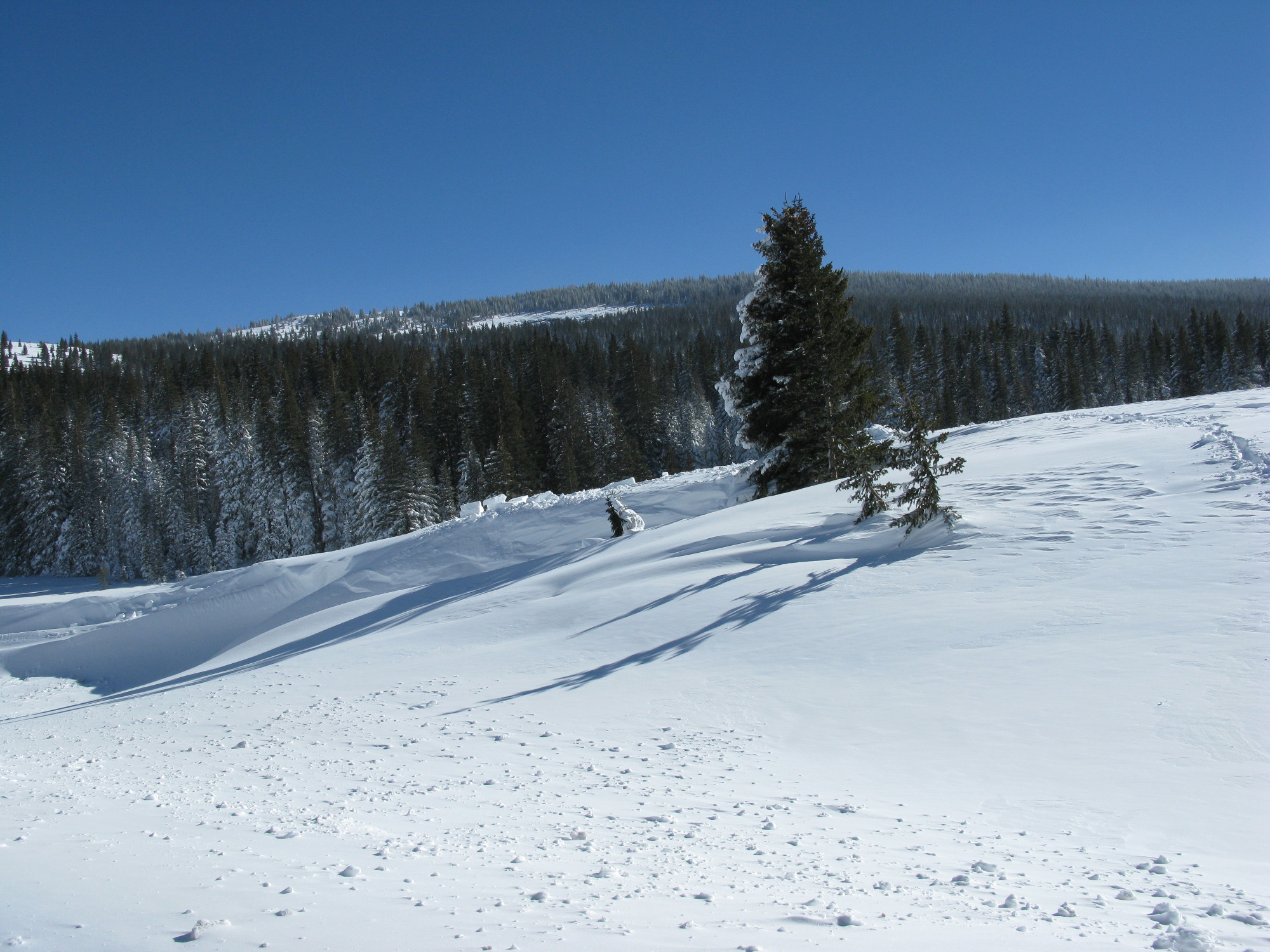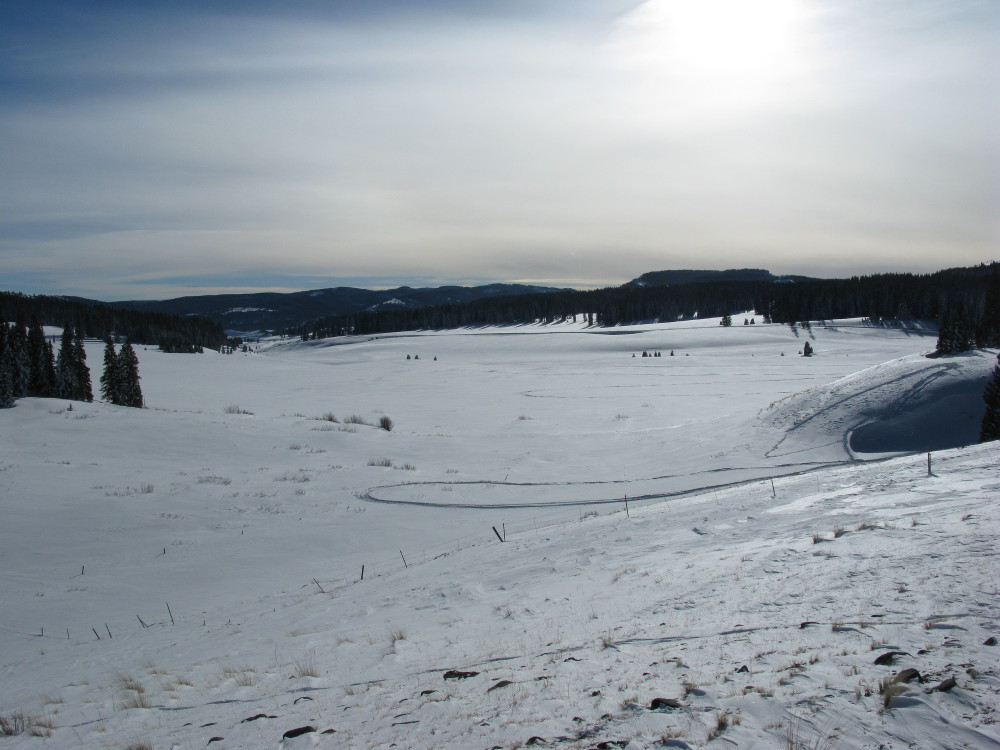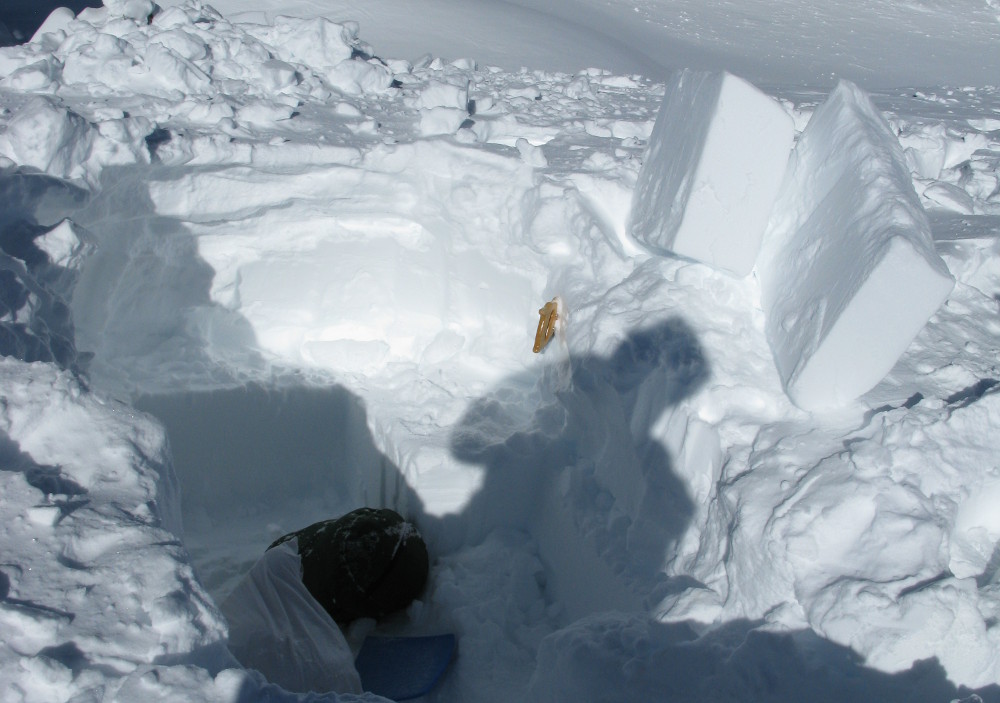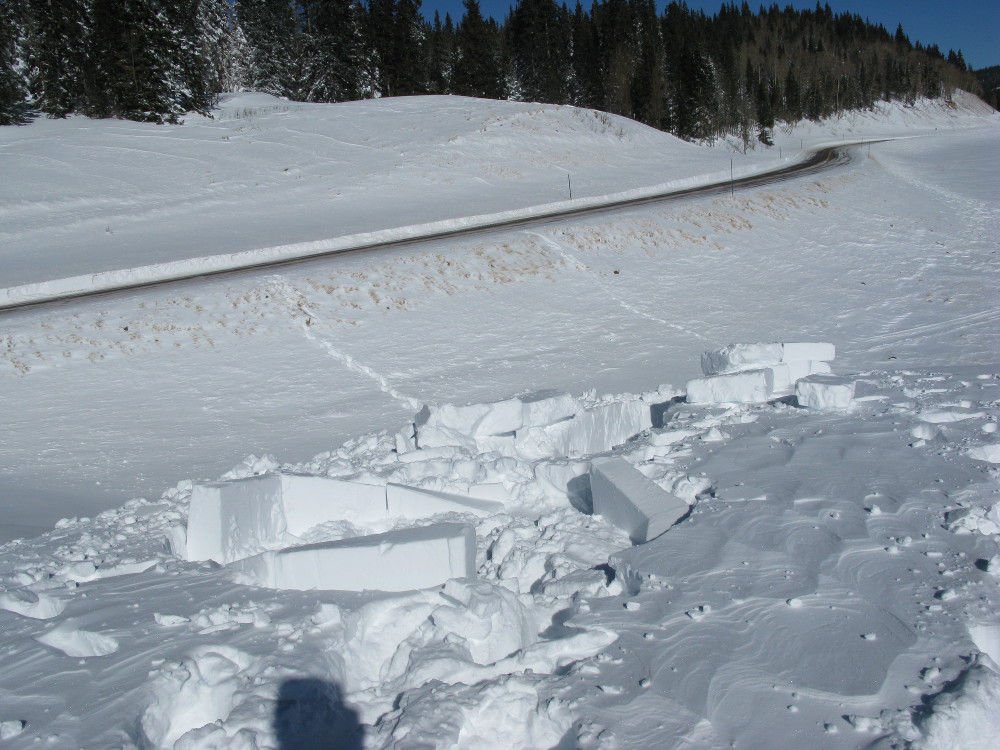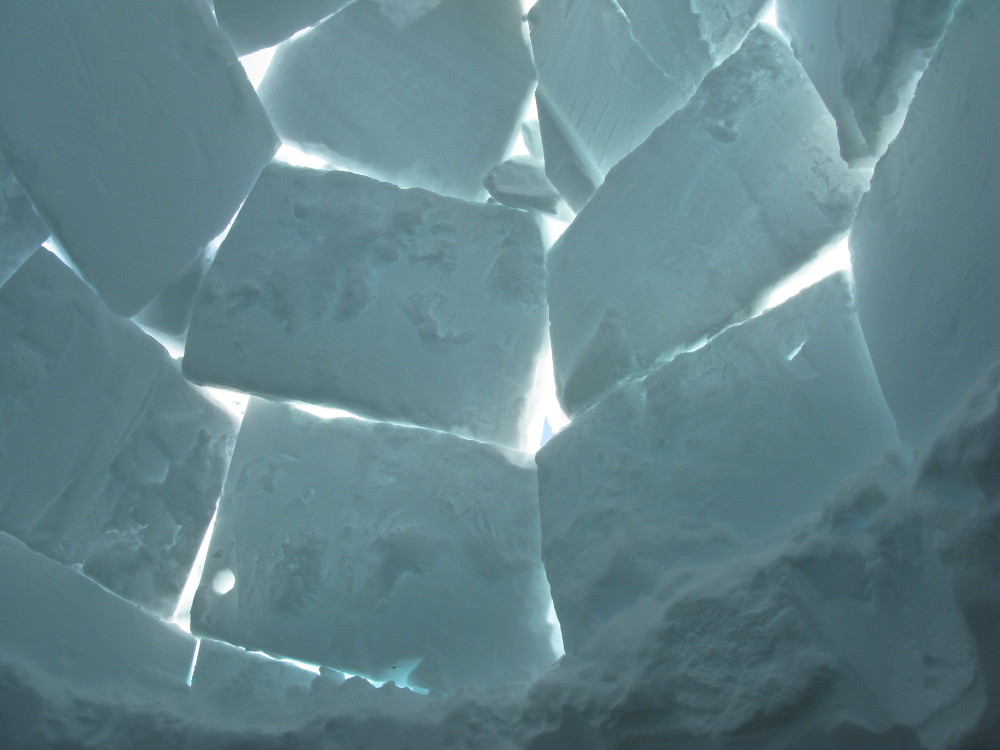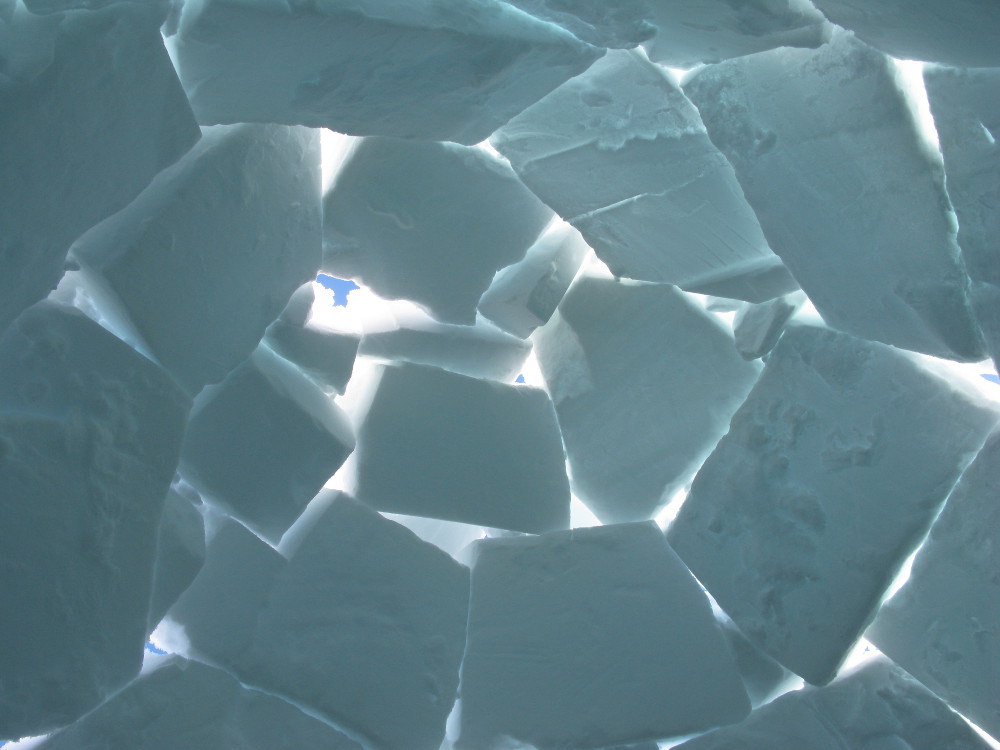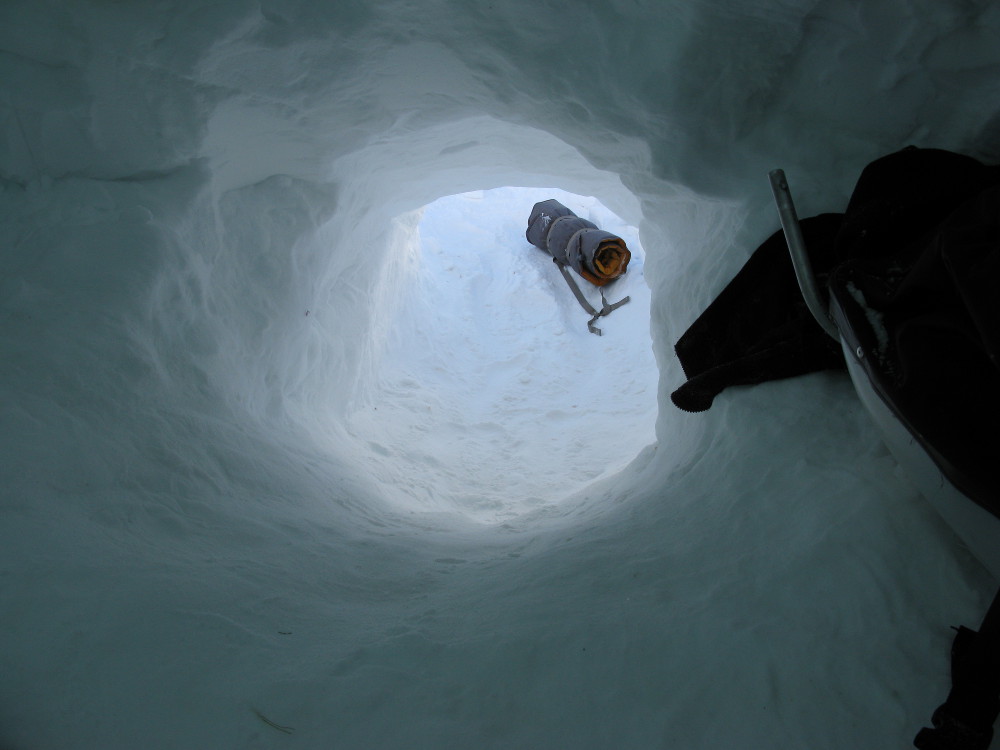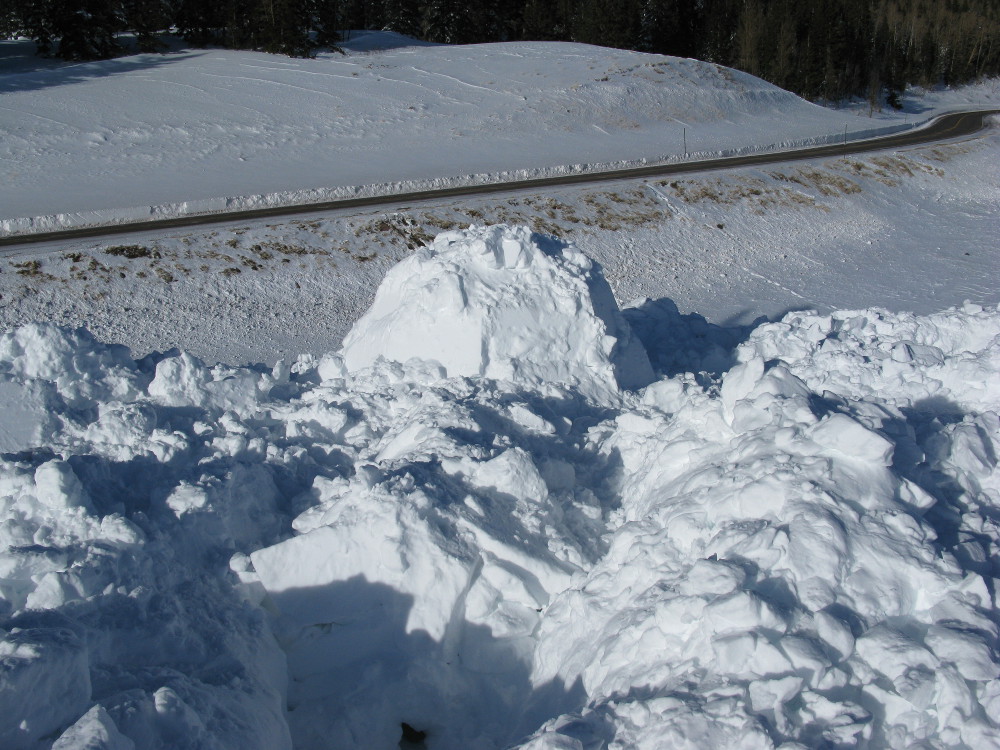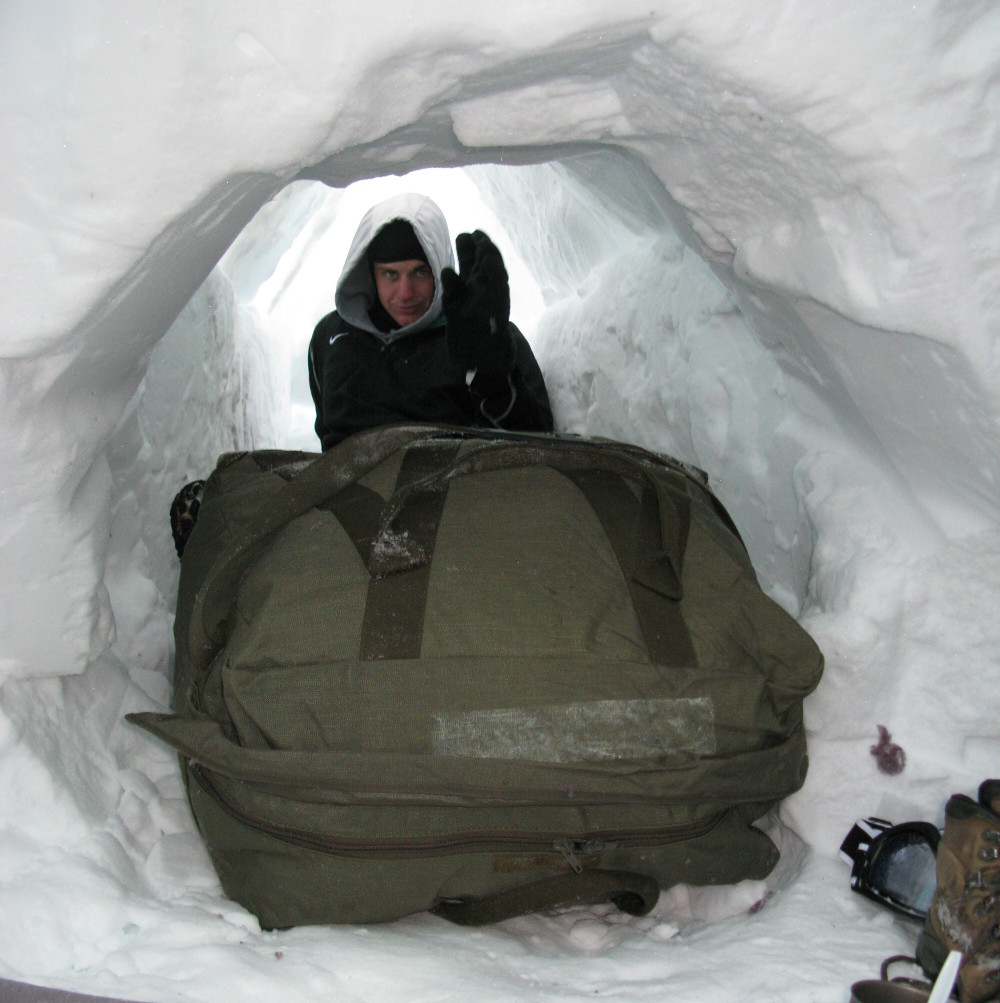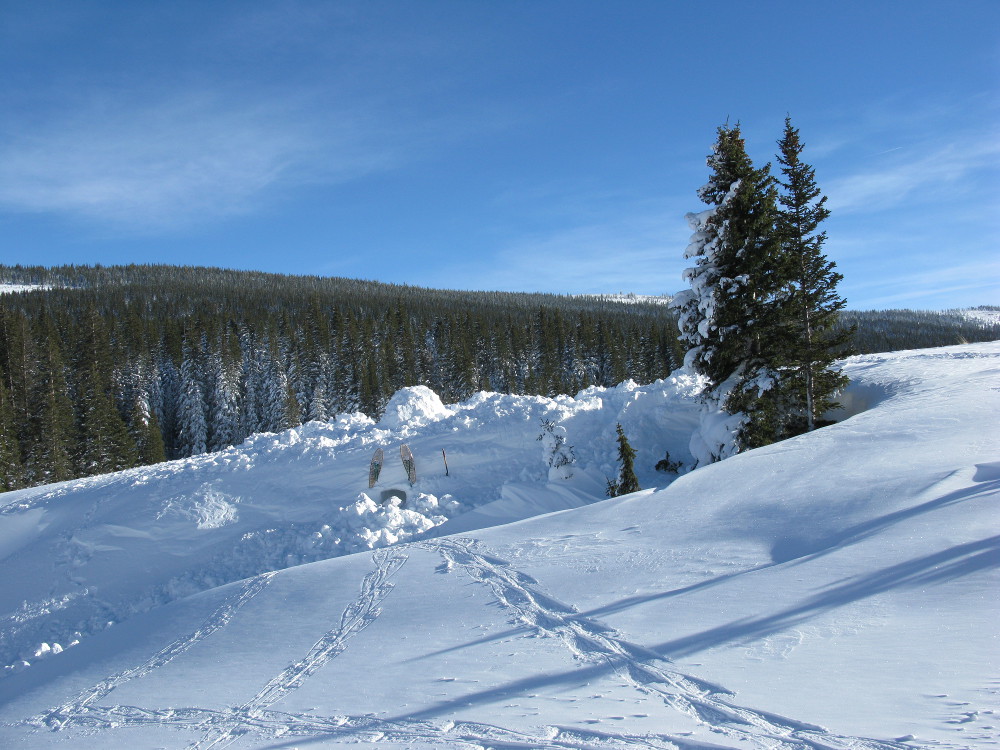La Manga Snow Camp, January 2011
Back in the 1990s, my father lead snow camping trips with The Boy Scouts to La Manga Pass, in Colorado. On the early trips I was too small to move large snow blocks, and thus had trouble building my own snow shelters. I did, however, spend a lot of time enjoying the wonderful sledding opportunities in the area. As I got older I was strong enough to work with snow blocks. I learned to build snow houses and igloos, as well as basic winter camping skills.
While it has been many years since my father took the scouts to La Manga Pass, I managed a return to the area around New Years 2010/2011. I finally got around to posting this in 2018. Looking back, winter camping was rare in scouting back in the 1990s; I hope that a few troops still do it.
I remember my father scouting for snow camping locations when I was about 10. He eventually settled on this hill a short distance south of La Manga Pass. At the time, the large tree was a lot smaller, and no other trees grew above the snow. Other than that, it was about the same
Wind blows across a large meadow, providing plenty of snow for the drift. Unfortunately, it also attracts numerous snowmobiles once the fences are covered up. The motors drone all day long, and you have the occasional high-speed jerk go flying right through your campsite, almost running you over. Ultimately, winter camping is better if you find a spot where there aren't any snowmobiles.
They generally plow a nearby pull out, so there is a spot to park. However, you have to be careful when there is a blizzard. One trip the cars got buried in by the plows and we spent an hour or two digging out. Never go winter camping without a shovel!
The snow drift is a short walk from the pull out. You may need snow shoes until you get a trail packed into the snow.
The wind-blown snow drifts generally provide good snow for making snow shelters. While digging a burrow is an option, I prefer quarrying for blocks and making an igloo or snow house. Start by digging down to packed snow. Then use a regular hand saw to chop out blocks. Sizes vary drastically, but I tend to aim for 8in x 20in x 30in.
A snow house is built by digging a straight, narrow, trench; often you just use your quarry. Then lean blocks over it in pairs of two. Snow houses are substantially faster and easier to build than an igloo, but are nowhere near as nice.
This is the start of an igloo.
The #1 lesson when building igloos is that you have to spiral it. If you build a ring of blocks you will have a very hard time doming it over. But if you start with a spiral, every block is held in 3 corners when you place it. While it isn't very stable, it will normally stay put while you are preparing the next block. And, when it doesn't stay put, it falls on your head, breaks, and you have to go cut a new block.
Most igloos have several interleaved spirals, and I never can get them to come together cleanly at the top. This photo shows you how I normally just seal it up with a bunch of odd-shaped blocks. Once all the holes are chinked the igloo insulates well. One hole is left in the top for ventilation. No doubt people that are actually good at this make a far nicer looking igloo, but this works.
Once the igloo is complete the floor is often dug down a couple feet. This provides a lot more space. Ideally the top of the entry tunnel should be below the floor of the igloo. This provides a natural air lock, keeping the warm air inside. The igloo was on top of the snow drift and the entry came out the side of the drift.
A cooking alcove was dug into the side of the igloo and a chimney cut above it (this only works when you dig the igloo floor down into the drift). When you want to make coffee you just chop a hunk out of the wall and melt it. Just make sure you have something to set your camp stove on. Oh, and propane stoves do not work well in the cold - use a liquid fuel stove.
While it is hard to identify on the surface, several snow houses were connected to the igloo.
Each snow house makes a handy little bed room. Note the snow blocks leaning against each other to form a roof.
I don't get out snow camping as much as I want to, but this was a good trip. On the way out I tried to stop in Alamosa for a shower. As smart phones were not common in 2011, I stopped at a laundromat to see if they also had showers. They directed me to the homeless shelter. I checked the other laundry mat; they also directed me to the homeless shelter. So I gave up and showered at a laundromat in Buena Vista, where they make some money off of backpackers in need of showers.
Last Updated: Nov 2018; Original Posting.
© David C. Hunter, 2011, 2018
fb {at) dragonsdawn (dot] org


